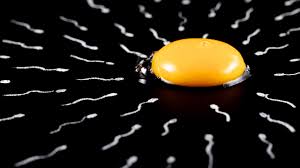Source: healtheuropa.eu
Research published in Analytical Chemistry, reveals how scientists have developed a quick and convenient way of assessing male fertility
Currently, male fertility tests include measuring the concentration and motility of spermatozoa. However, other characteristics of sperm, such as their ability to follow a chemical trail to the egg, can influence the likelihood of fertilization.
Now, researchers have devised a quick and convenient microfluidic chip to assess this chemotactic response of spermatozoa, which could help provide a more complete picture of a man’s fertility.
Progesterone can attract sperm
Sperm use chemotaxis, or movement toward increasing or decreasing concentrations of a substance, to guide their journey through the fallopian tube to the egg. Progesterone is present at high concentrations in the fluid that surrounds the egg, and previous studies have indicated that the hormone can attract and activate spermatozoa of some mammalian species.
Scientists have used microfluidic devices — plastic or hydrogel chips with tiny channels through which liquids flow in a highly controlled manner –to study sperm chemotaxis.
Existing devices have certain limitations
Loes Segerink, Johanna Berendsen and colleagues wanted to develop an improved, pump-free microfluidic device that could quickly identify small differences in the chemotactic behaviour of sperm. As the previous devices have had various limitations, such as the need for pumps to drive the flow of fluid, which could affect sperm motility.
A device the size of a postage stamp
Based on the existing devices, the team designed a microfluidic chip about the size of a postage stamp. The chip, which they made with an agarose/gelatine material, contained various channels and side chambers.
They created a concentration gradient of progesterone in the device from left to right and saw that more boar spermatozoa added to the device swam to the right-side chambers (high progesterone) than the left (low progesterone), which shows chemotactic movement.
The researchers explained that in addition to fertility testing, the device could be used to investigate other substances that could also contribute to sperm’s guidance mechanism.
